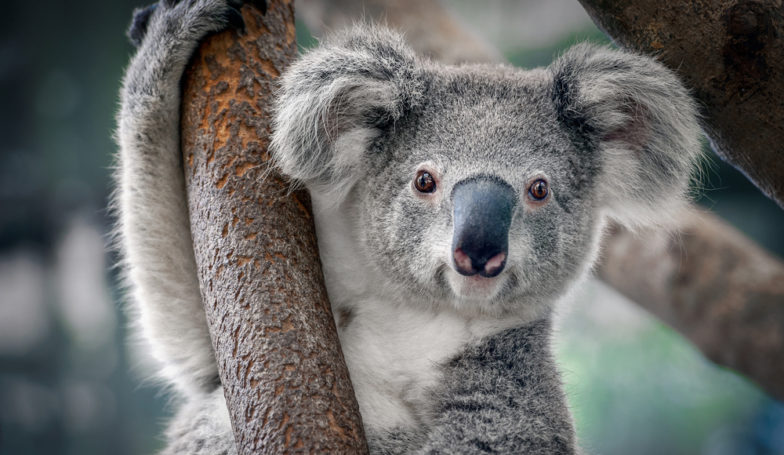Genetically Modified Plants Challenge Biological Evolution
Heated debate surrounds the safety of genetically modified foods—foodstuff derived from organisms that have been genetically altered.
Plants are the most common genetically modified organisms (GMOs). Researchers produce GMOs by either (1) altering gene expression (usually over expressing genes); or (2) adding new genes from another organism to create transgenic plants. Some people oppose genetically modified foods because GMOs are unnatural, and consequently, may be unsafe.
Recently, a team of scientists from Sweden discovered that GMOs can arise spontaneously in nature through a process (horizontal gene transfer) that transfers genetic material from one higher plant species to another.1 In other words, at least some GMOs are natural.
This new discovery impacts not only the controversy surrounding genetically modified foods, but the creation-evolution controversy as well. As it turns out, the modifications to an organism’s genome that occur as a result of horizontal gene transfer mimic the genetic signatures taken as evidence by many scientists for common descent and biological evolution.
The Case for Common Ancestry
According to the evolutionary paradigm, all life on Earth is related through the process of common descent. In the distant past an organism (or community of organisms), dubbed the last universal common ancestor, spawned a number of lineages that evolved separately, and in turn, diverged to ultimately generate the diversity of life that exists today and has existed throughout Earth’s history.
Evolutionary biologists devote significant effort to discovering the presumed evolutionary history of life. They build evolutionary trees—diagrams that putatively describe the ancestral and descendent relationships of Earth’s life displayed in a branching tree-like pattern.
Over the last few decades, evolutionary biologists have turned increasingly to DNA sequences to construct evolutionary trees. Organisms with highly similar DNA sequences are considered to have shared a common ancestor more recently than organisms displaying greater sequence differences. Evolutionary biologists also interpret genetic similarities among organism as evidence for their common ancestry with differences arising post-divergence.
Horizontal Gene Transfer Mimics Common Ancestry
As I have discussed previously (here and here), scientists discovered that horizontal gene transfer in bacteria and archaea and also in vertebrates produces the same signature in the genome as common ancestry.
Horizontal gene transfer describes any mechanism that transfers genetic material to another organism without the recipient being the offspring of the donor. As a consequence of horizontal gene transfer (when viewed from an evolutionary standpoint) organisms that are unrelated to each other through common descent will have the same DNA sequences.
The latest work by the team of Swedish scientists now adds higher plants to the types of organisms impacted by horizontal gene transfer. The researchers discovered that the gene that encodes the enzyme PGIC (and surrounding areas of the chromosome) was transferred from a meadow grass (Poa palustris) to sheep’s fescue (Festuca ovina). These two plants are distinct species and are not known to hybridize. The researchers suspect that the piece of DNA was horizontally transmitted via a pathogen (like a virus or bacteria) that can incorporate its DNA into the genome. It is likely that an insect carrier helped mediate this transfer.
Until this work, scientists were highly skeptical that horizontal gene transfer could occur between higher plant species. This skepticism is no longer justified. It is interesting to note that in 2003, a team of researchers discovered that the transfer of mitochondrial genes between higher plants appears to be widespread.2 It may well be the case for nuclear genes also.
Impact on the Case for Biological Evolution
For many people, DNA sequences shared among organisms are regarded as the best evidence for evolution and common descent. But as this most recent work demonstrates there are other mechanisms beside common ancestry that can introduce the same DNA sequences in organisms unrelated to each other via common descent.
These types of studies indicate that the best evidence for evolution may not be evidence for evolution at all. It could be a consequence of some other mechanism, like parasite-mediated horizontal gene transfer.
Endnotes
- Pernilla Vallenback, Lena Ghatnekar, and Bengt O. Bengtsson, “Structure of the Natural Transgene PgiC2 in the Common Grass Festuca ovina,” PLoS One 5, no. 10 (2010): e13529.
- Ulfar Bergthorsson et al., “Widespread Horizontal Transfer of Mitochondrial Genes in Flowering Plants,” Nature 424 (July 10, 2003): 197–201.





